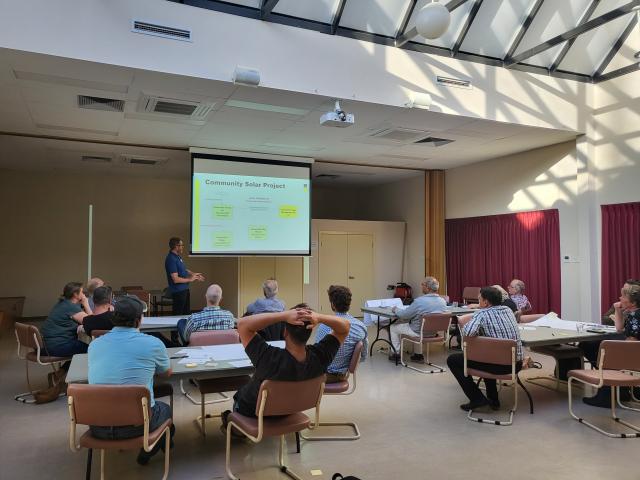By Callum Ludwig
A step forward was taken in introducing smarter energy storage for Yarra Junction and Healesville at the Active Energy Precincts Community Workshop in Yarra Junction last week, which followed a recent one in Healesville.
The Active Energy Precincts Project is a collaboration between Monash University, Birdwood Energy and three local government areas (LGA) including the Yarra Ranges.
Yarra Ranges Council’s Energy Resilient Communities Officer Amy Gregorovich said the microgrid study came about after Monash University was awarded $1.9 million from the federal government’s Regional and Remote Microgrid Reliability Fund.
“The grant was to use their microgrid, smart energy, storage and commercial expertise to help two towns in each LGA explore the potential of localised electricity grids. A microgrid is a system for managing electricity supply and demand on behalf of locally interconnected homes and businesses,” she said.
“Yarra Junction and Healesville were chosen to be the study towns as the microgrid models are centred around community ‘hubs’ of activity that can be activated during times of need, especially during grid outages following extreme weather events. Both Healesville and Yarra Junction have hubs of community facilities in close proximity to essential services (shops, banks, pharmacies etc) that the microgrid modelling could focus on. Both towns also have a recent history of extreme weather events – Yarra Junction Recreation Reserve and The Memo have acted as relief centres in the past.”
Initial community and Council discussions began in late 2021, where larger energy users in the community were consulted one-on-one.
Ms Gregorovich said a survey was then circulated to interested residents and businesses in mid-2022, asking questions about their individual energy priorities and what they would like to see at a community level.
“Overwhelmingly, energy resilience was a key priority for the majority of respondents, with 53 per cent of respondents reporting that power outages had major impacts on their daily lives. Furthermore, survey respondents were taking actions to improve energy resilience at their own homes, through installing solar and/or batteries, but were also interested in seeing solutions be implemented at a community level,” she said.
“These results have shaped the microgrid design to date – the modelling of a microgrid in Yarra Junction has been centred around the Yarra Junction Recreation Reserve, and in Healesville, around The Memo and the Healesville Community Link/Library building.”
Residents, small business owners, and representatives from community groups attended the workshops and identified community ownership, the potential benefits to vulnerable people in their communities and the importance of having energy-resilient community hubs where locals can seek relief and community information during times of need as the most important aspects of the project.
Ms Gregorovich said communities in the Yarra Ranges are becoming more exposed to extreme weather and related power outages as the climate continues to change.
“We had 3,000 homes/businesses without power and/or internet for over a month following the June 2021 storms. We hope these microgrid feasibility studies, and other pilot projects detailed in our Liveable Climate Action Plan, can help our communities become more resilient to these extreme weather events, whilst also supporting a transition towards renewable energy and lower energy costs during times outside these events,” she said.
The project team will be running another round of community engagement in early 2023 prior to the feasibility report being published in May 2023. Residents and businesses can find out more about the project at www.yarraranges.vic.gov.au/Environment/Sustainable-communities/Microgrid-Projects or they can contact sustainability@yarraranges.vic.gov.au to be added to the newsletter list.
Project Lead from Monash University Priya Galketiya said they are also installing monitoring devices at other businesses, Council facilities and the houses of residents who had given permission to access their solar generation and electricity use data.
“This data will help us understand the community’s power usage and optimum pathways to efficiently use assets such as batteries, solar generation and opportunities such as electrification, for example, heating and cooling or electric vehicles, to provide greater benefit to participants.”







